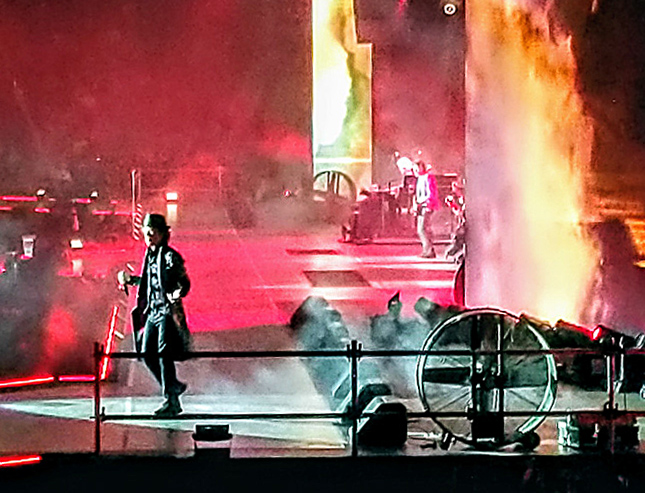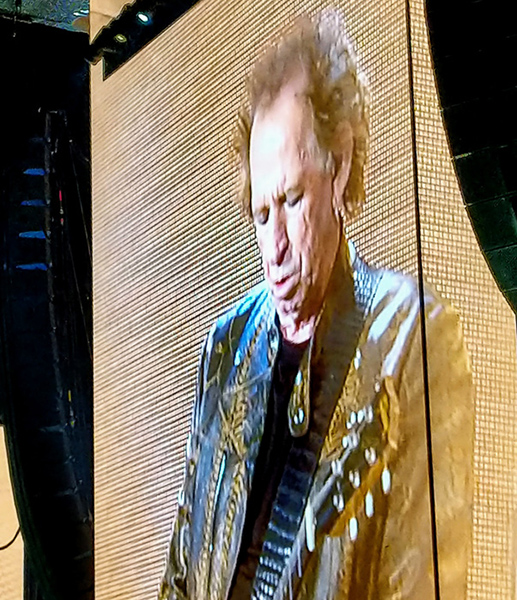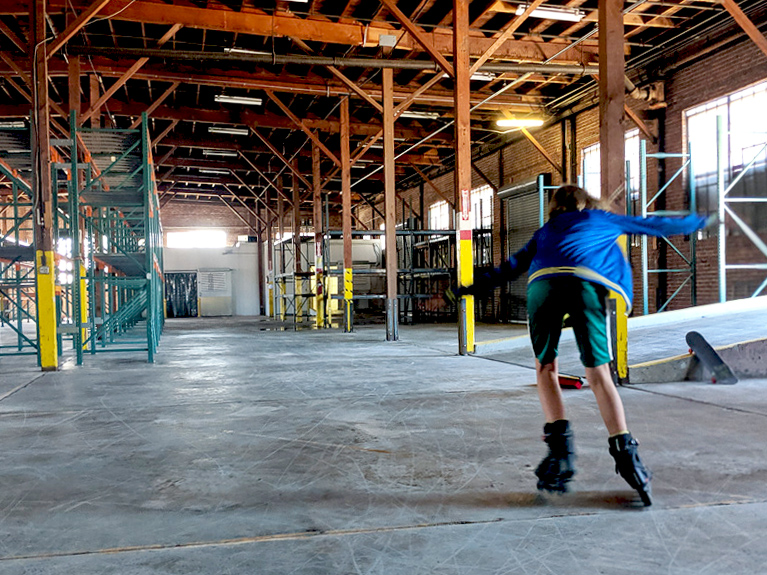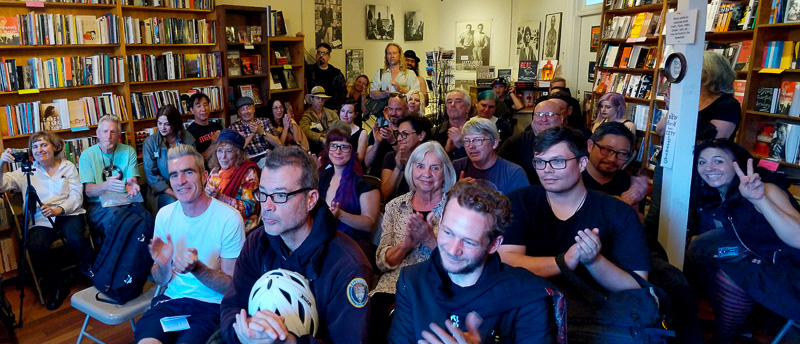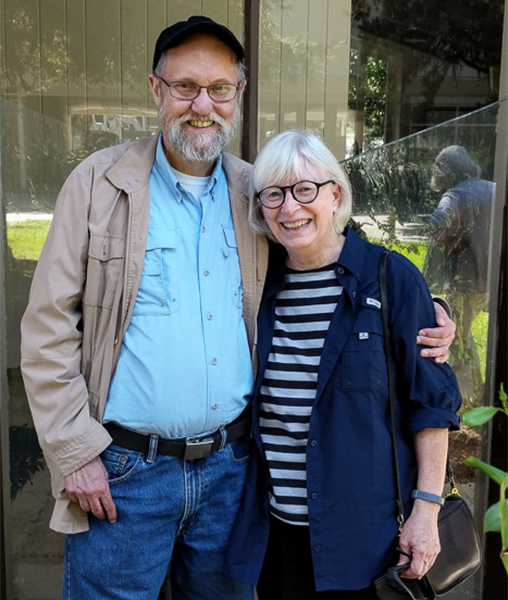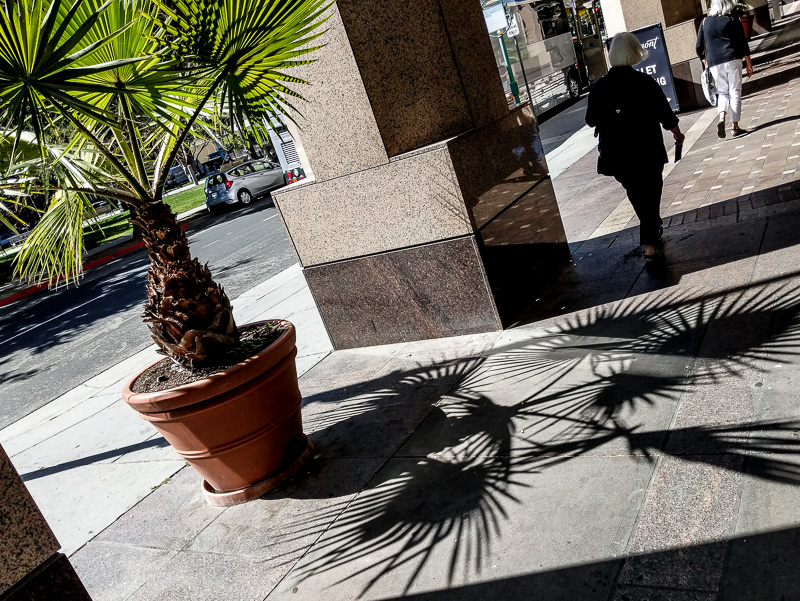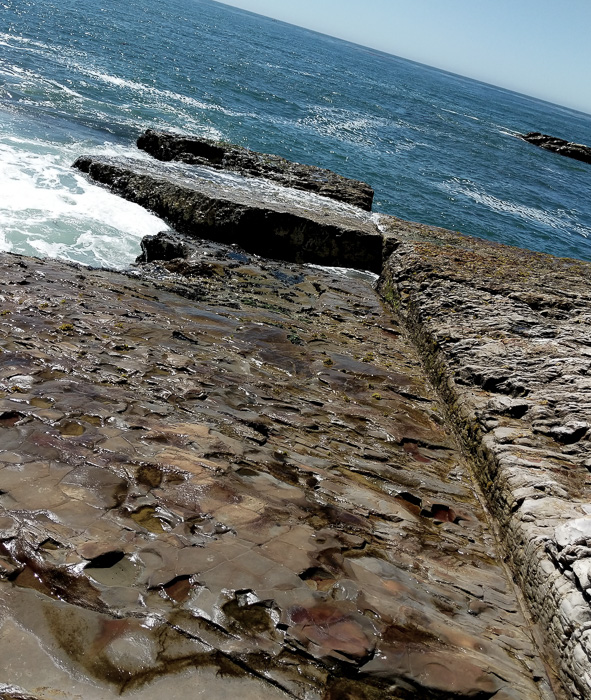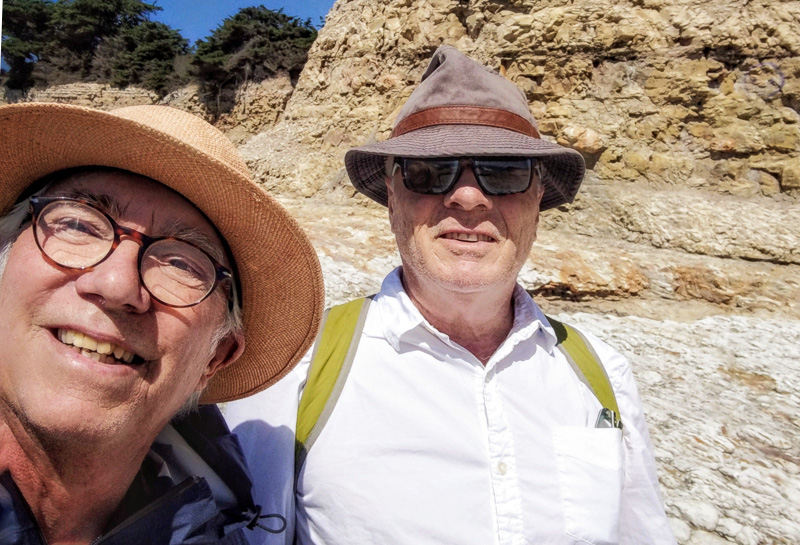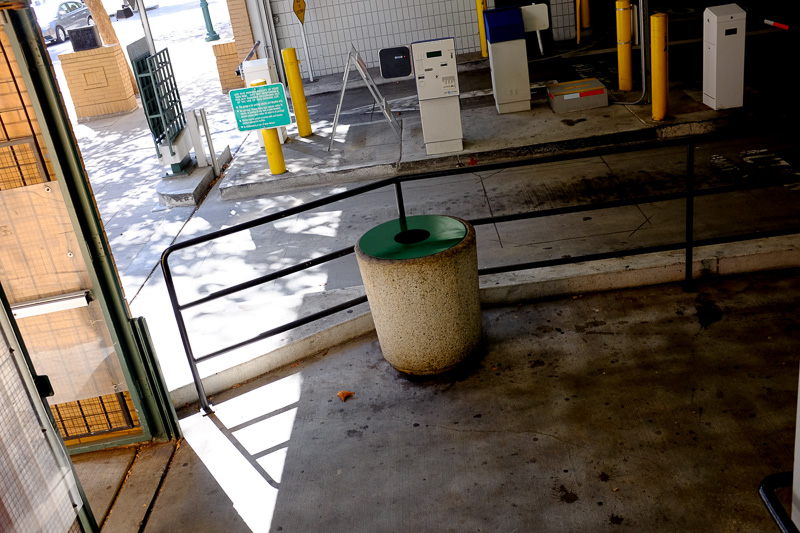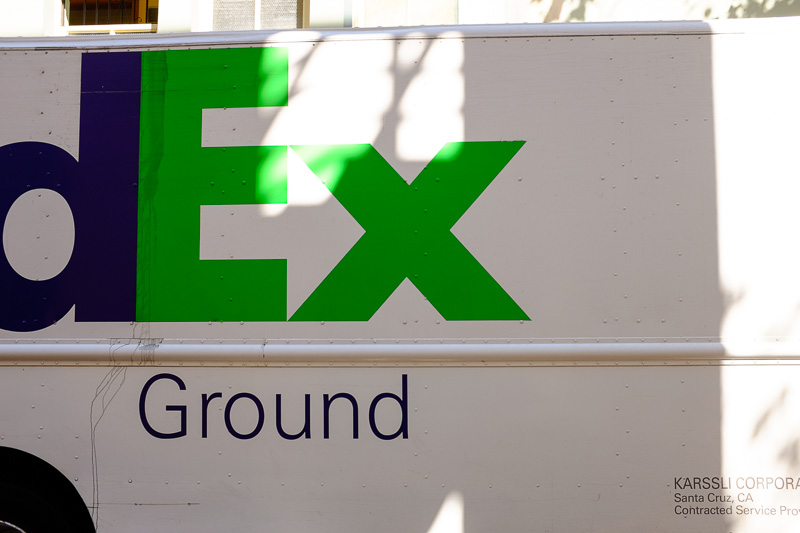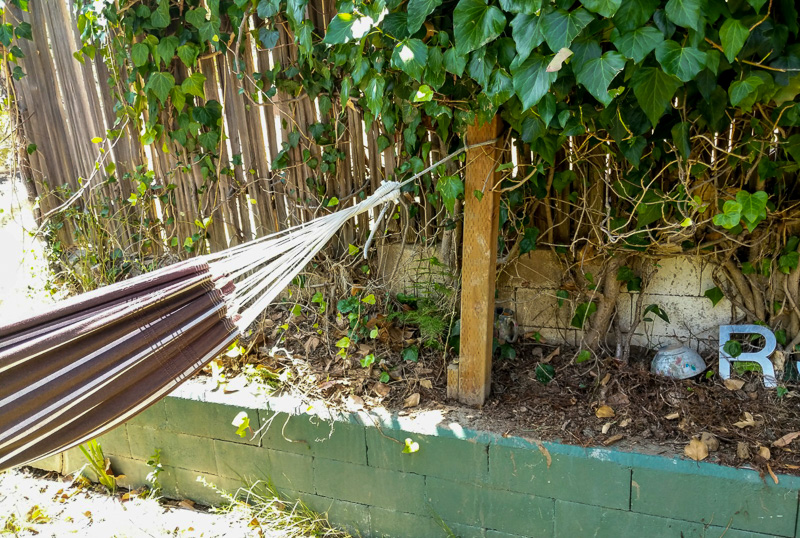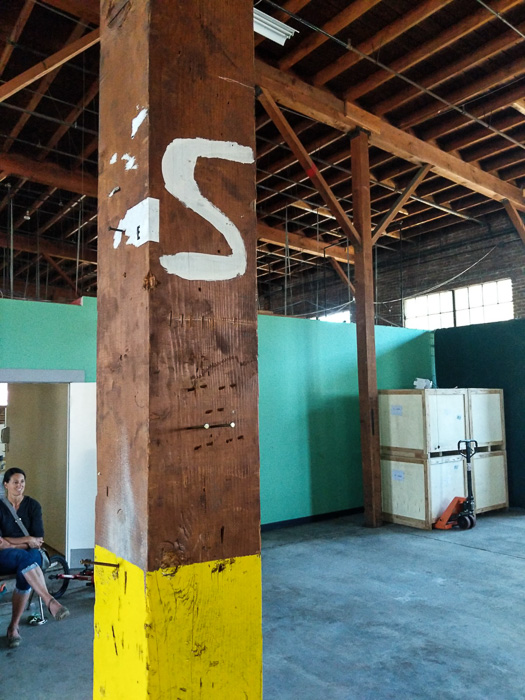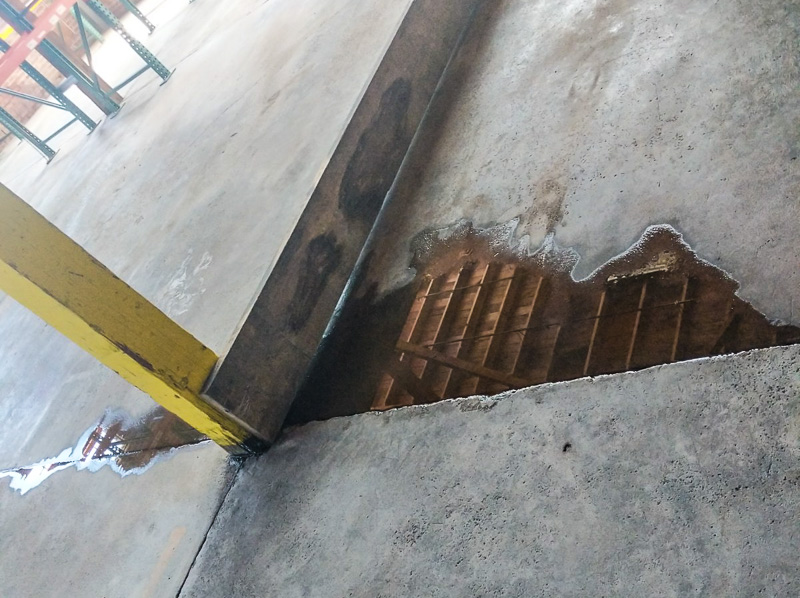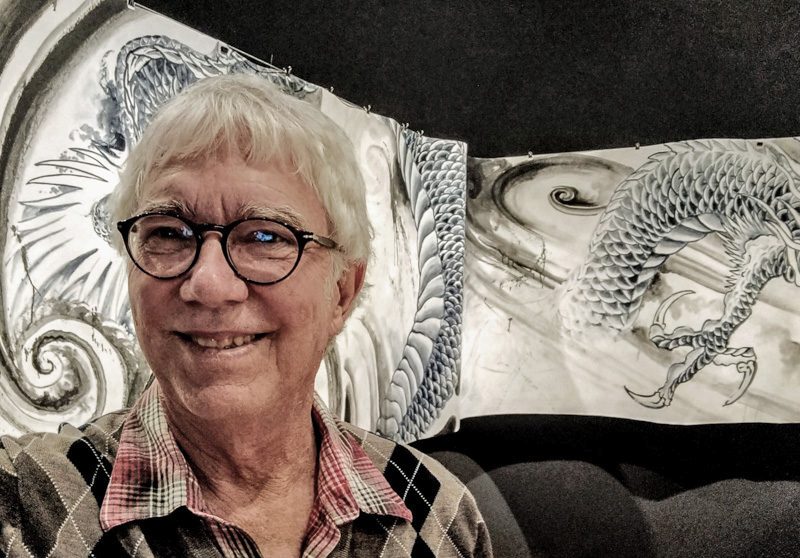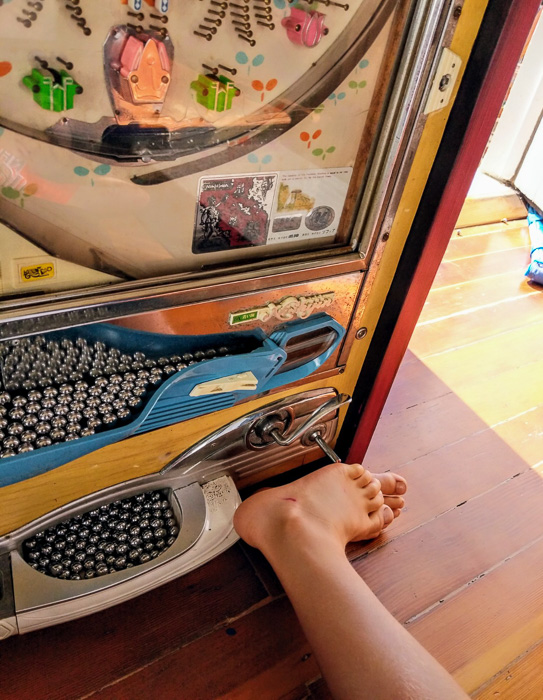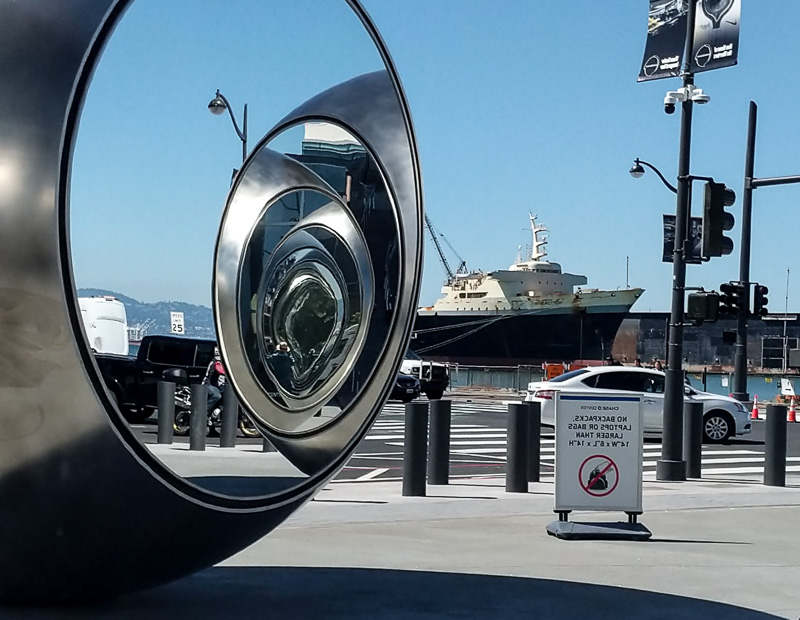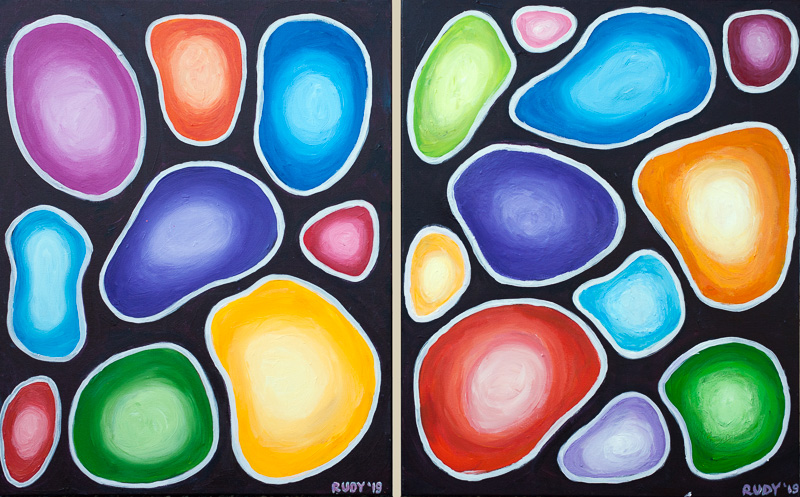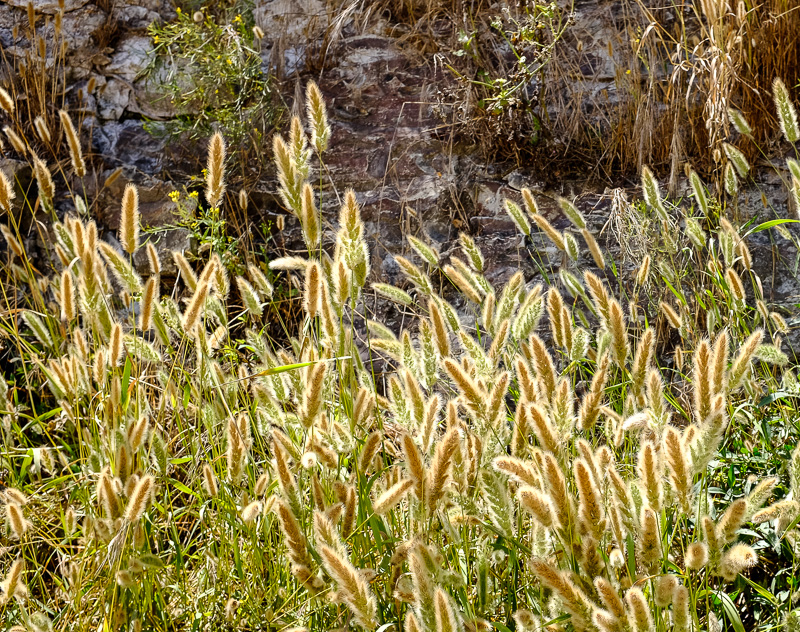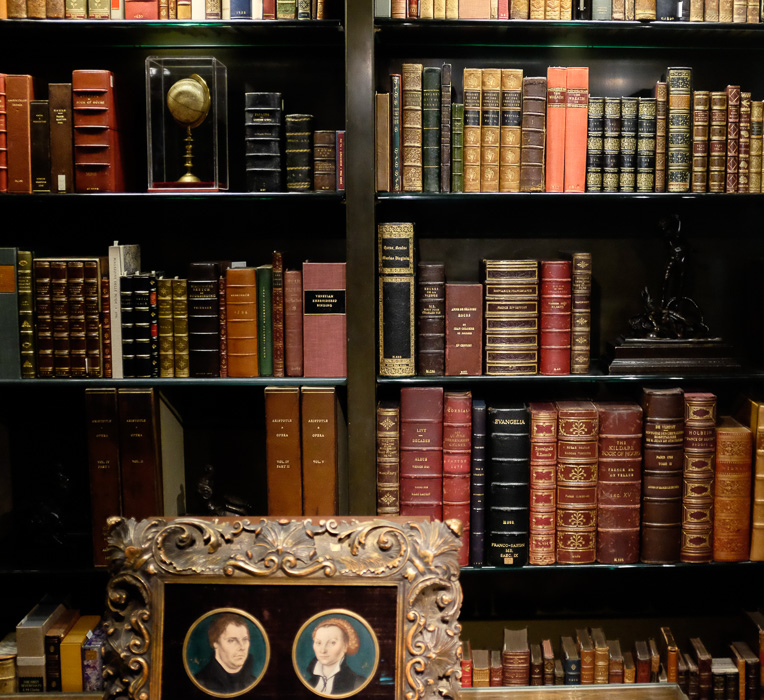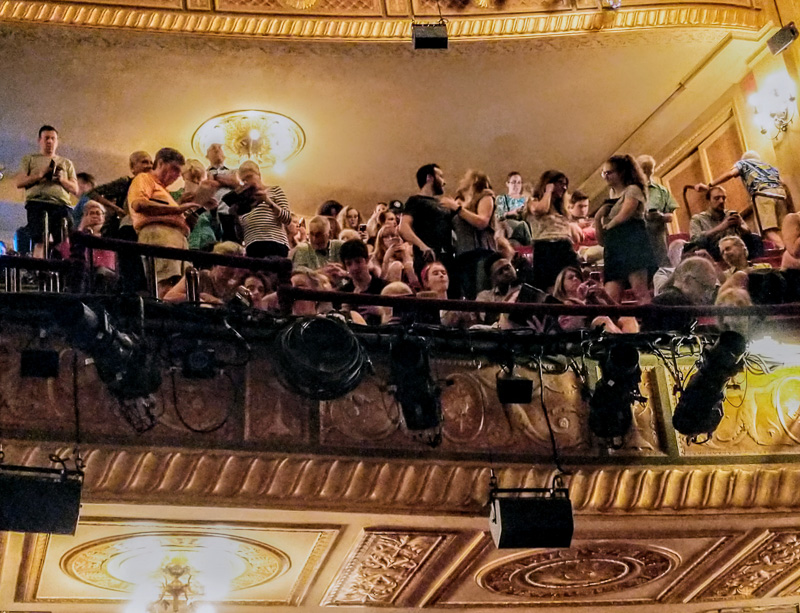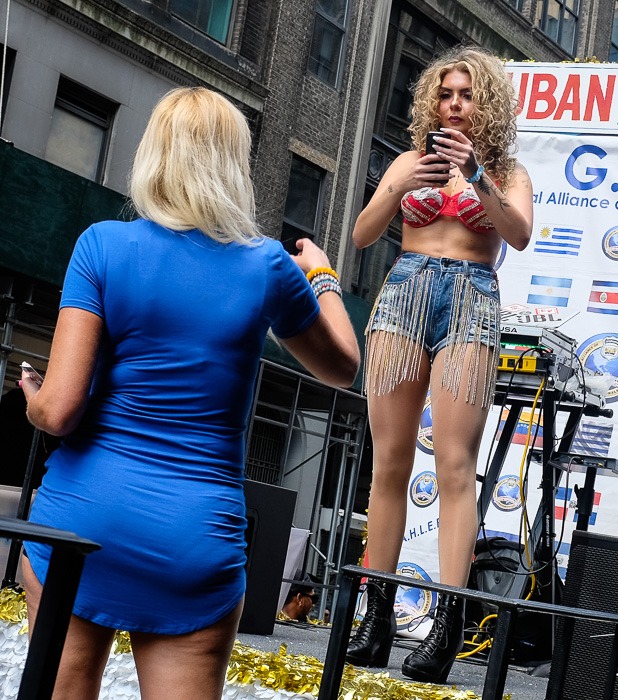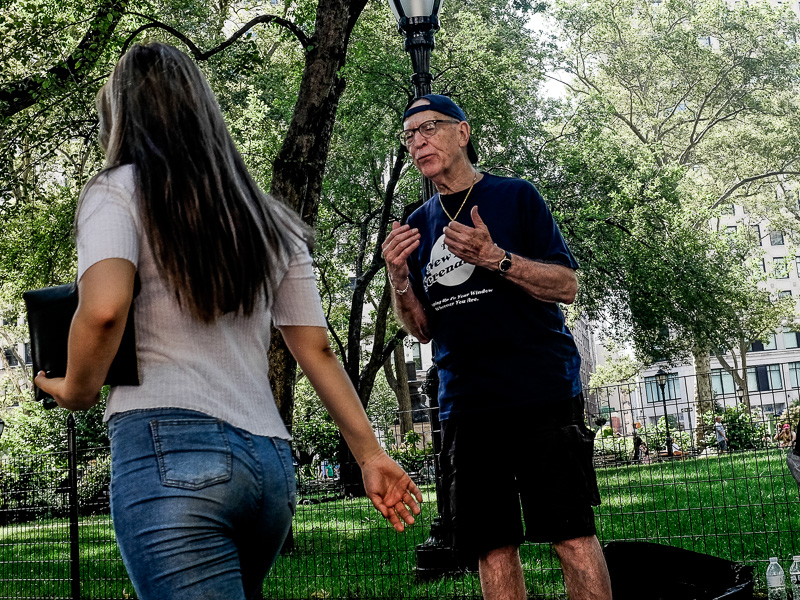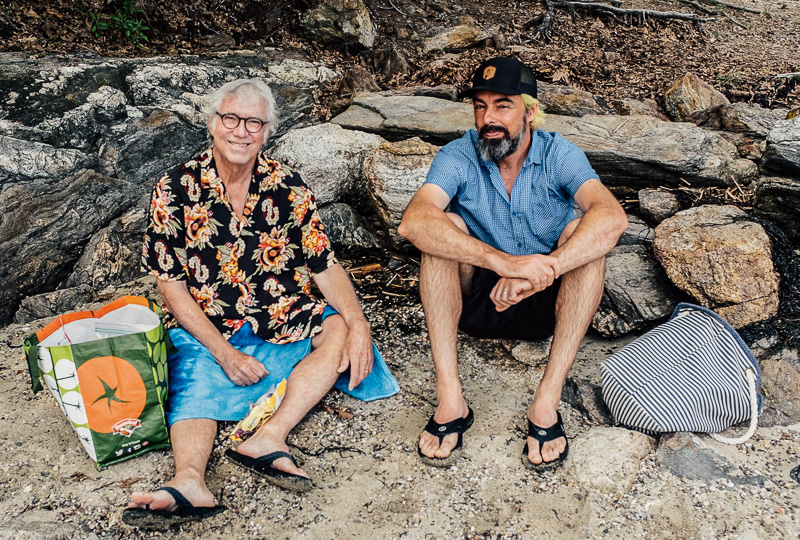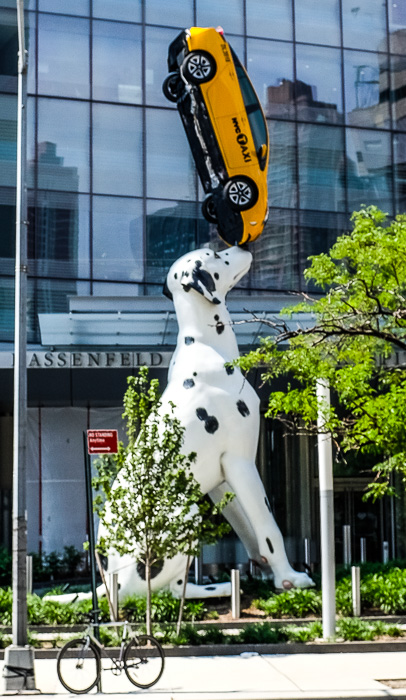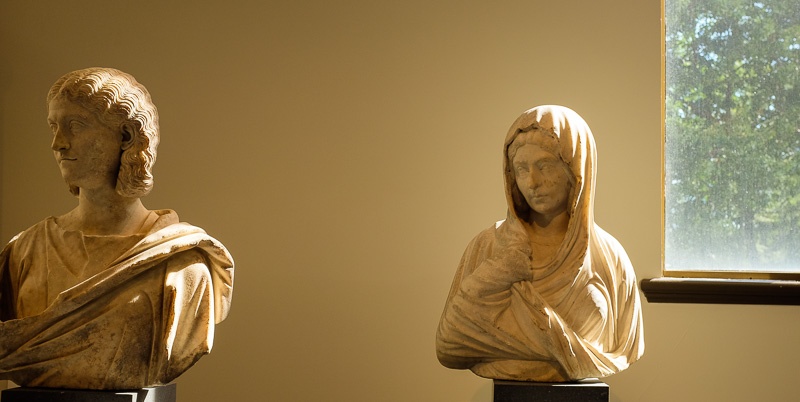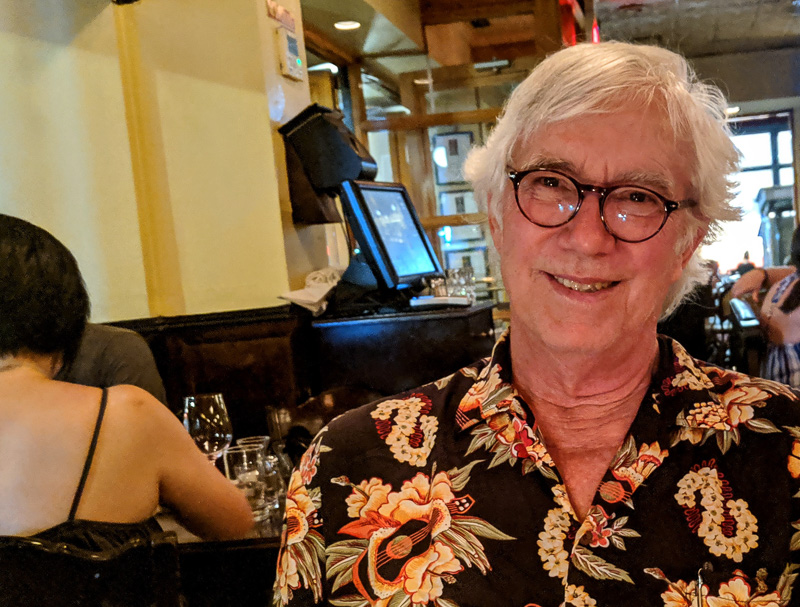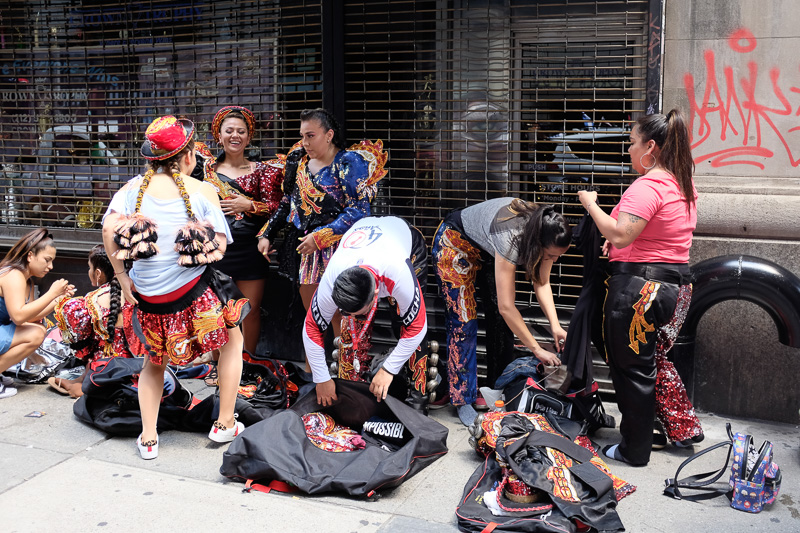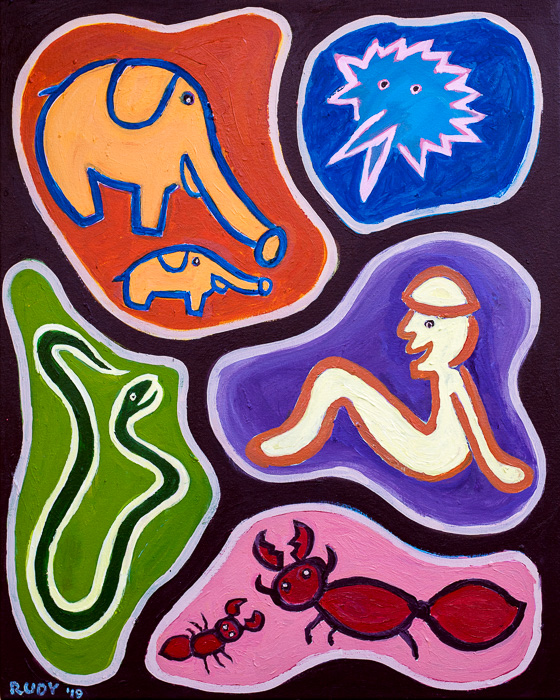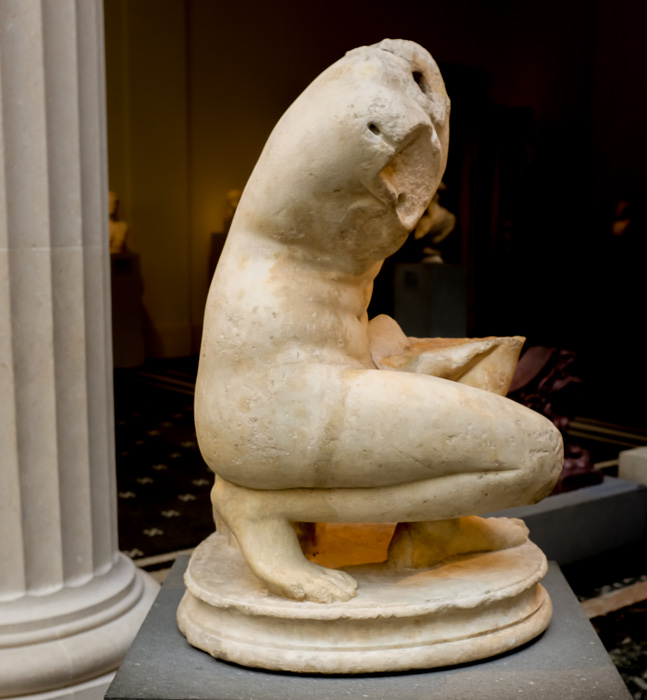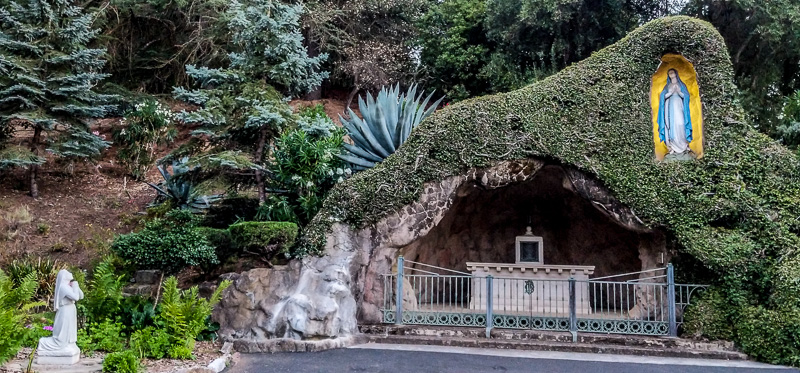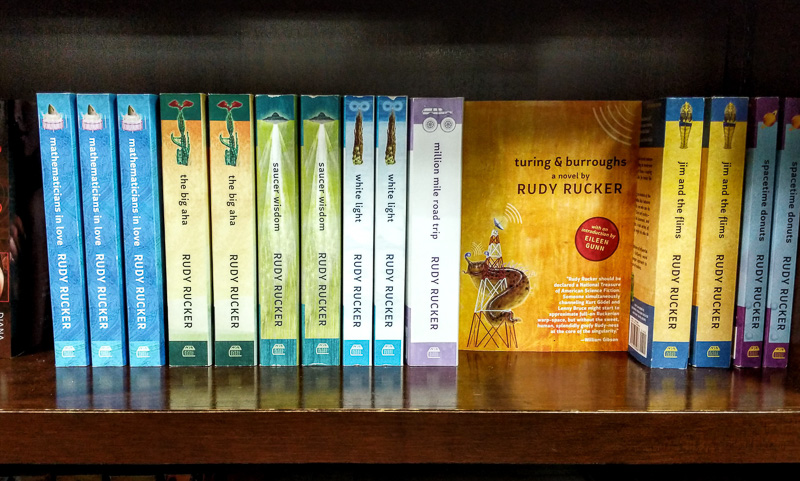My latest story with Marc Laidlaw is in the Nov-Dec, 2019, Asimov’s SF magazine. Today’s blog post is a copy of a post I put on the Asimov’s blog. And thanks to Emily Hockaday for making that happen.
“Surfers at the End of Time” is the seventh story that Marc and I have collaborated on. All but one of the tales are SF surfing stories that feature two guys called Zep and Del.
Often when I collaborate, I’ll do what I call a transreal move, that is, I’ll have the story be about two people, and one of the characters is somewhat like me, and the other is like my co-author. To some extent Zep is like me, and Del is like Marc. This said, we often ventriloquize each other’s characters, in that Marc might write Zep scenes and I might write Del.
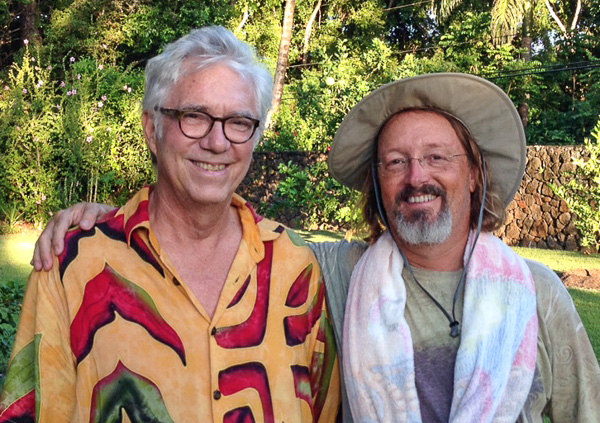
This time out, we wanted to do a time-travel story. We’d talked about this for a few years. At first we were focused on the notion of flooded cities, with the sea-level half-way up on the sky-scrapers. This theme was featured in the excellent 2001 Brian Aldiss inspired movie, A.I. Artificial Intelligence, and there’s a touch of it in Tomorrowland too. Marc had imagined surf contests amid the buildings. But in 2017, just as we were ready to start, Kim Stanley Robinson pretty much used up the trope with his New York 2140. Marc and I did write some nice flooded-San-Francisco scenes, but we needed more.
Marc was enthused about the H. G. Wells novel The Time Machine—and about the 1960 movie version directed by George Pal. I watched the movie online, and I dug it. We wanted to use Wells’s classic scene where the Time Traveler goes so far into the future that the sun is bloated and the Earth is nearly lifeless. Thus our title: “Surfers at the End of Time.” I like to pronounce the last word like I’m in an echo chamber: “Tiyiyiyiyiiiiiimmmme.” You know.
Since Marc and I both know Ocean Beach in San Francisco pretty well, we decided to start our story there. A significant research element was William Finnegan’s memoir Barbarian Days: A Surfing Life. The book has a long section about Mark “Doc” Renneker surfing the intensely cold and gnarly waves at the SF beach—you can read it online in the New Yorker.
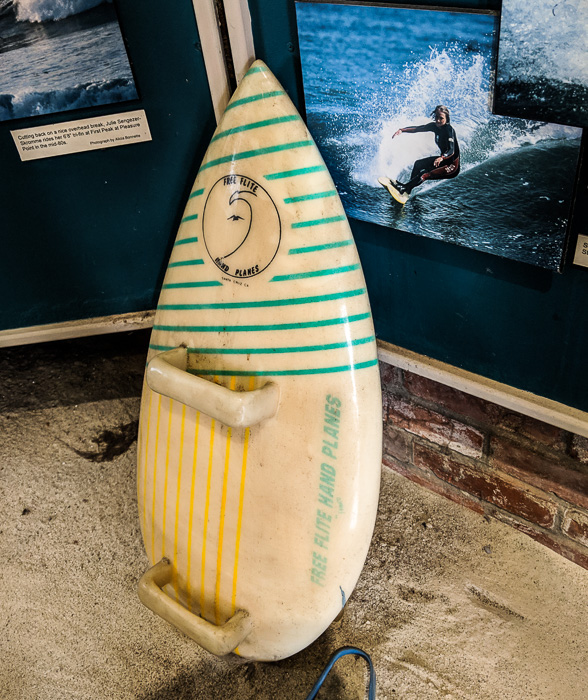
We felt the time machine should be in some sense a surfboard, and I spotted a cool-looking little “hand board” in the wee Santa Cruz Museum of Surfing which is inside a diminutive lighthouse by Steamers Lane.. Marc had the idea of having the boys activate the time machine by scribing an intricate mandala-like sigil upon the face of the sea.
We expanded on the notion of a time sigil by imagining an intricate, arabesque spacetime diagram of our boys’ worldlines. I redrew the figure ten times while we where working on the story. I’m a little surprised how complicated it turned out, but that’s where the logic leads. I kept sending the successive diagrams to Marc, but he wasn’t always that into trying to decipher them. The dude wasn’t a math major!
At least the diagram helped me a in terms of planning the complex plot of the story. Time travel is a bitch. Like, you need to be careful not to imagine that the characters can predict the abrupt and non-causal appearances of time travelers. And, as I’ll discuss below, there’s the matter of time paradoxes.
In the diagram, you’ll notice five names at the top, and these names correspond to the five worldlines below. Gother and Sally are women that Zep and Del meet, and Lars is kind of gnome called a murg. As I’ll discuss shortly, he has a closed-loop worldline.
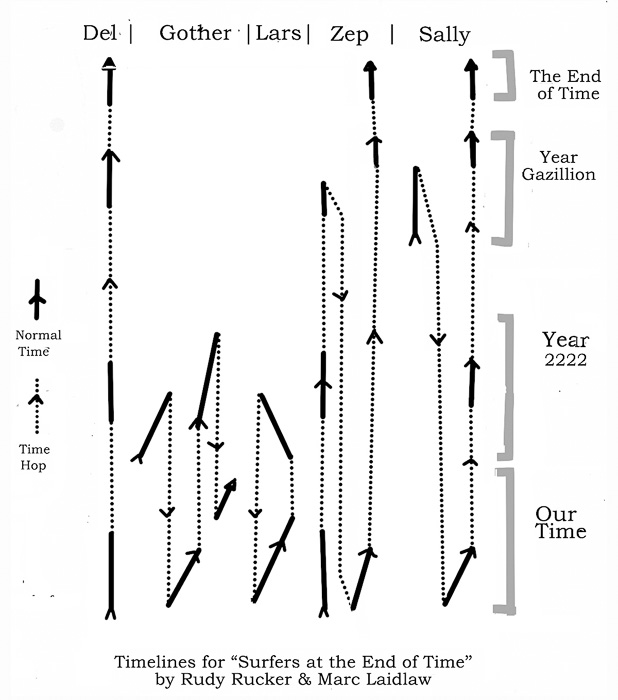
In time travel stories you always have to deal with the issue of possible time paradoxes. There are two main types of problems.
(1) Closed Causal Loop. A creature like Lars the murg appears at time and place X with a handboard time machine. You hang out with him for awhile, making your way forward in time. And once you and Lars are in the future, he uses his time machine to hop back to the time and place X. Who produced the murg? Who invented the time machine? They produced themselves. Their worldlines are loops. Is this a problem? Not really. There’s no real contradiction in a Closed Causal Loop. It’s just odd. But we can live with odd. Especially in a Zep & Del surfin’ SF story!
(2) Yes and No. Your future self comes back in time and chops you and your friend in half with a broadsword. If you die, then your future self doesn’t exist, so he doesn’t kill you, so then your future self exists, so he does come back and kill you. A contradictory situation. A standard journeyman SF-writer solution is to say that, when you travel back in time, you don’t actually go back into your own timeline. You go into the past of a parallel world. I don’t like this solution; I think it’s facile and dull. My deeper problem is that, if there a zillion parallel worlds, then everything happens. An if everything happens, then nothing matters. And then cares what happens to your characters?
Once in awhile, sure, I’ll invoke an alternate world—like if I need a world who’s physics is wildly different from ours—like if I want a world with infinitely high mountains, or with an endlessly wide plain. But it seem cheap to invoke parallel worlds just to avoid a piddling little yes-and-no time travel paradox. Like using an H-bomb to light a joint. There’s always gonna be a tricky way out of any seeming paradox, if you think hard enough.
In “Surfers at the End of Time” our characters Zep and Del travel up and down the timeline, and they do, at times, encounter past or future versions of themselves. So how do we avoid Yes and No paradoxes without invoking alternate worlds? As the great logician Kurt Gödel once suggested to me, “Let’s suppose that the world always arranges itself so that these paradoxes do not occur. If something is logically impossible, then it doesn’t happen. A priori logic is very powerful.”
As I’ve already hinted, in the opening sections of our story, it appears as if a Viking-like Zep from the future comes back and slices both the original Zep and the original Del in half. Ye and No paradox? Well, it doesn’t have to be—if our boys don’t die. But how do they survive being chopped in half across their waists by a huge broadsword? Well, not to give too much away, let’s just suppose that the boys’ severed halves are treated with some special futuristic biomedicine… Like good old Kurt Gödel says: “The a priori is very powerful!”
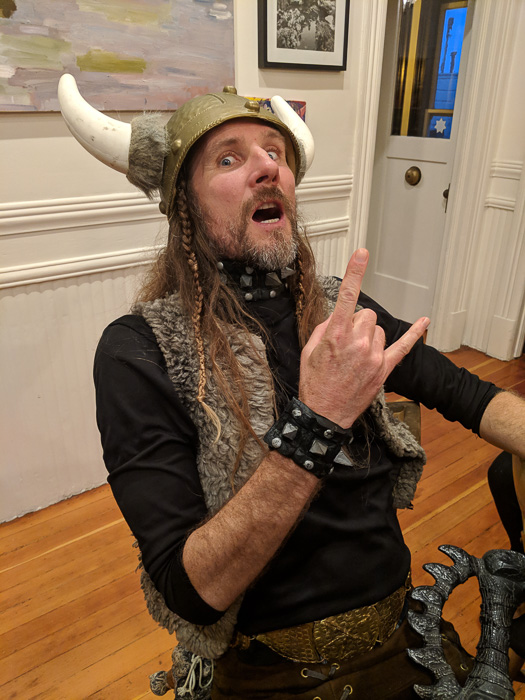
By the way, I got the idea of future Zep being like a Viking when my wife and I went to our son Rudy’s family Halloween party in San Francisco. And in the kitchen I met a friend of Rudy’s named John Bowling. He was wearing a horned Viking helmet, and had his long hair partly in braids, and he had a long beard. He was wiry and lively, and he told me he’s a big wave surfer and that he lived in a condo on the Great Highway by San Francisco’s Ocean Beach—exactly where Marc and I wanted Zep and Del to live. I texted Marc a photo of the Viking surfer dude, and Marc texts back, “HE’S A TIME TRAVELLER, DUDE.” Synchronicity! Times like this I feel like I’m dancing with the Muse.
It was fun to work with Marc again, and not be writing on my own. Collaborating takes longer than writing alone, and at times it’s a little stressful to iron out the necessary shared decisions. But a collaborator like Marc puts in all kinds of beautiful, inspired stuff that I would never have thought of. And I end up thinking about the story more deeply. And the story ends up being funnier. I’m not necessarily trying to write funny stories—I’d hate to be called an SF humorist—but I like it if a story makes people smile or even laugh out loud. And it’s even better if it’s kind of sad and tragic and romantic as well. Like life itself.
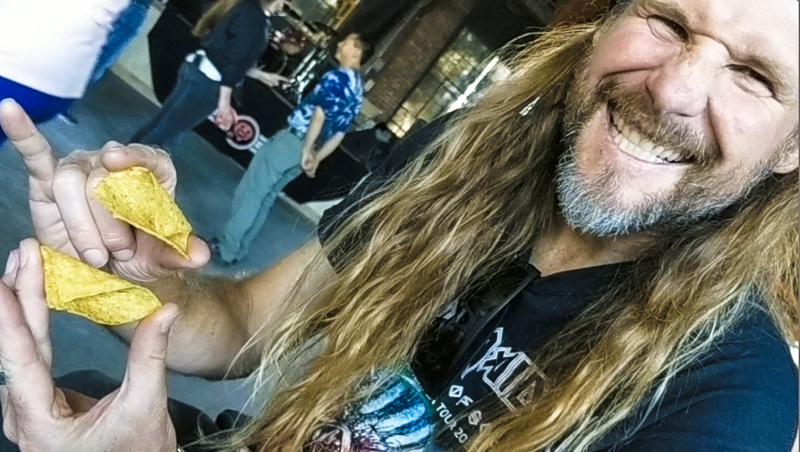
By the way, about two months before our story appeared, I saw our real-world Zep inspiration again, and he explained to me that Dorito chips are excellent models of waves with tubes. He said he’d had a collection of about twenty really good ones, but that his wife had thrown them out.
Party on, Zep. Party on, Del.









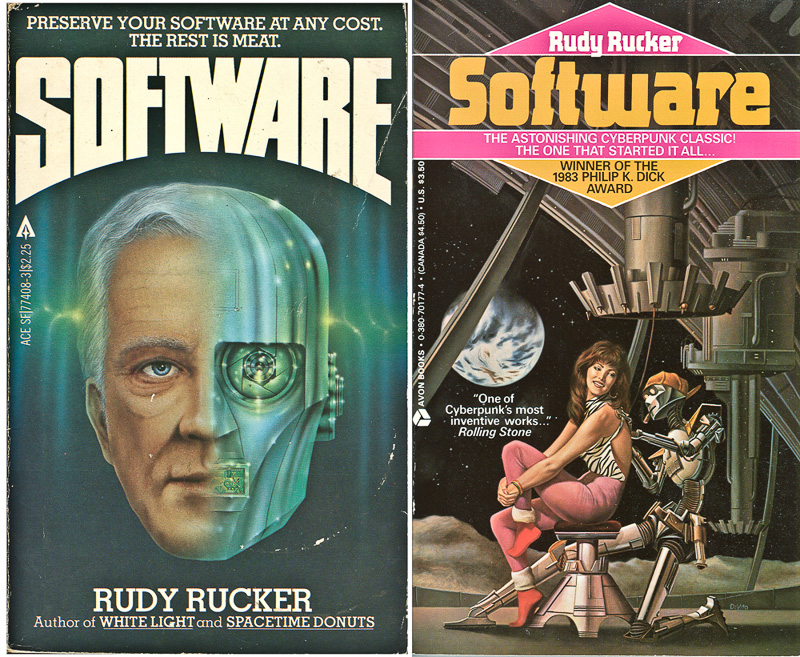
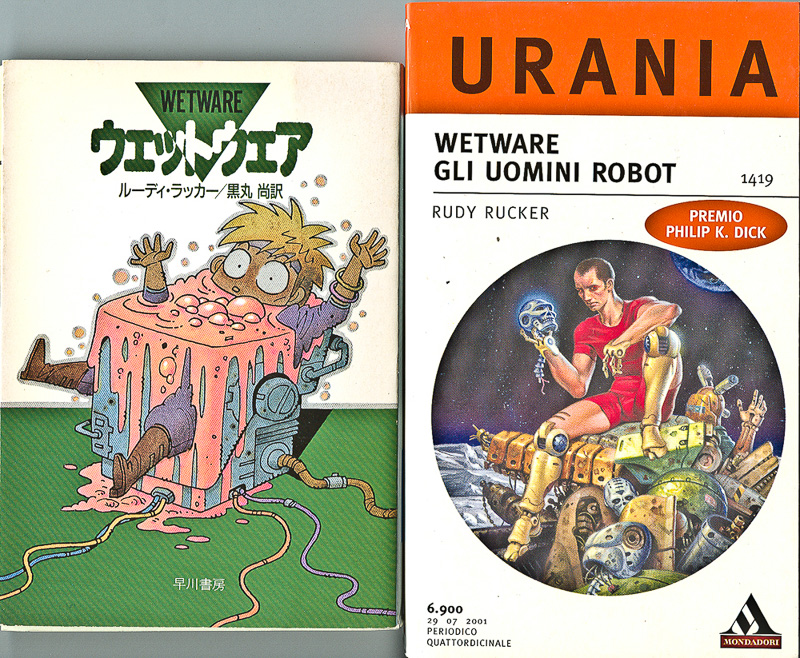
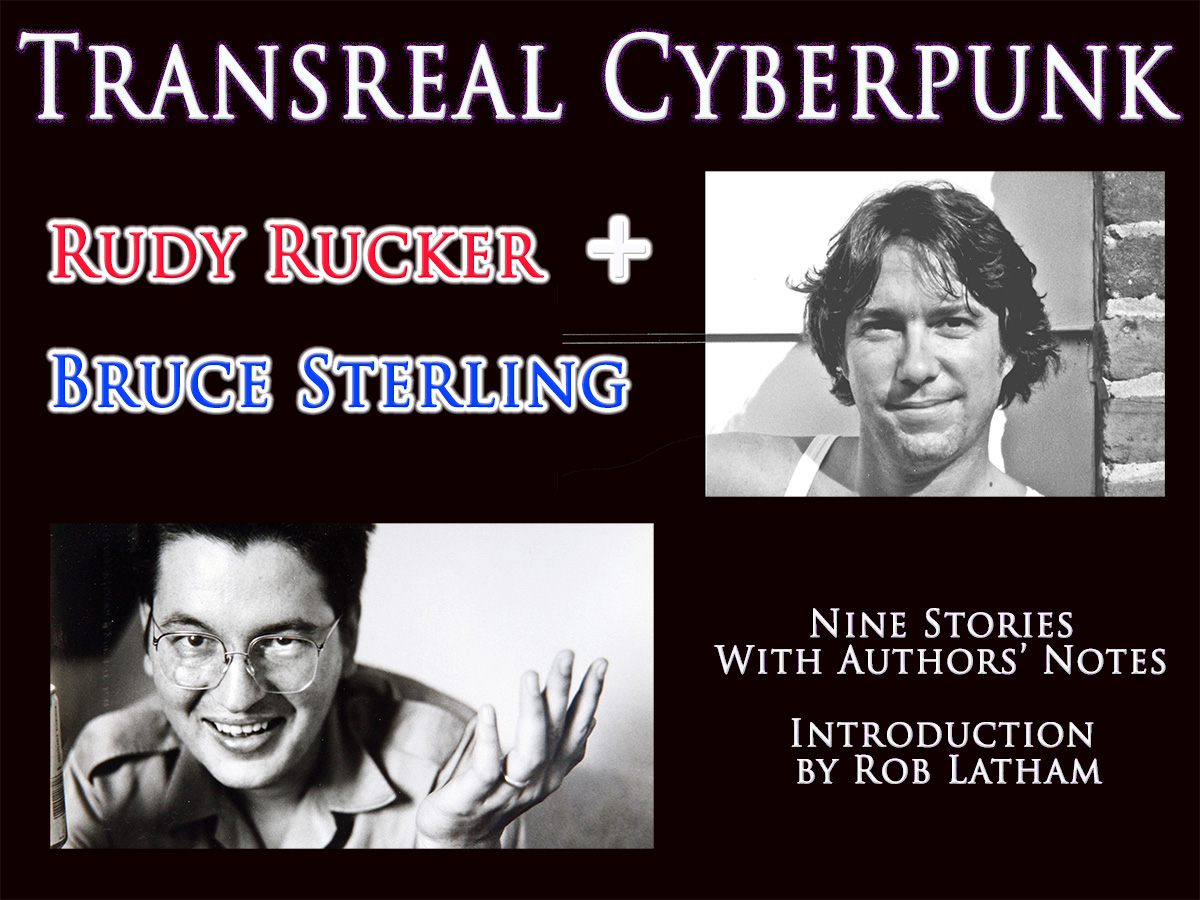
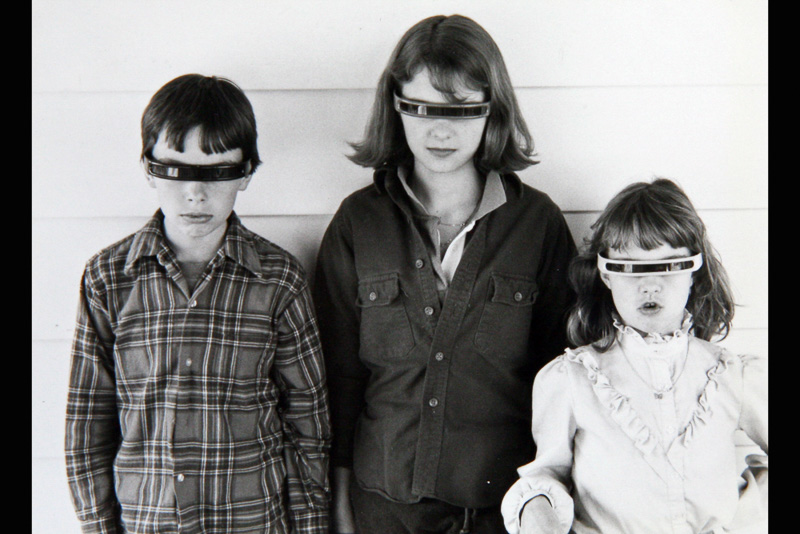
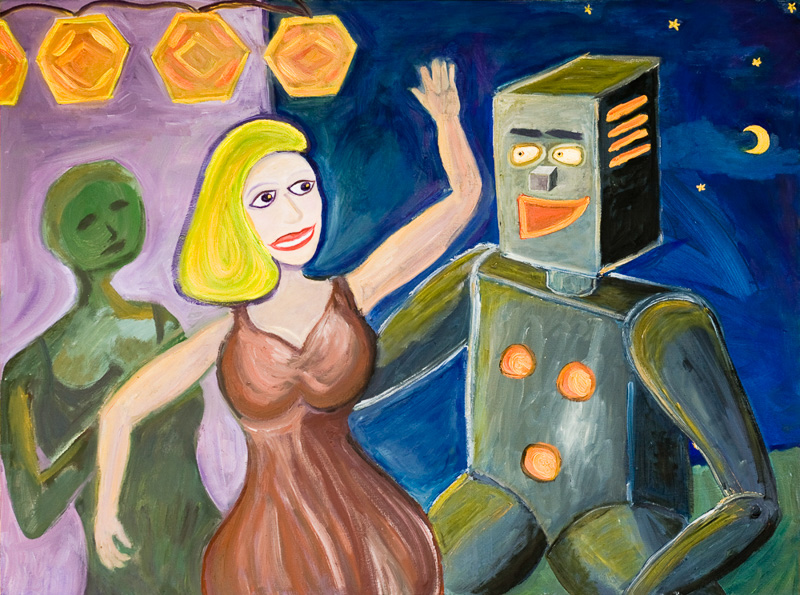
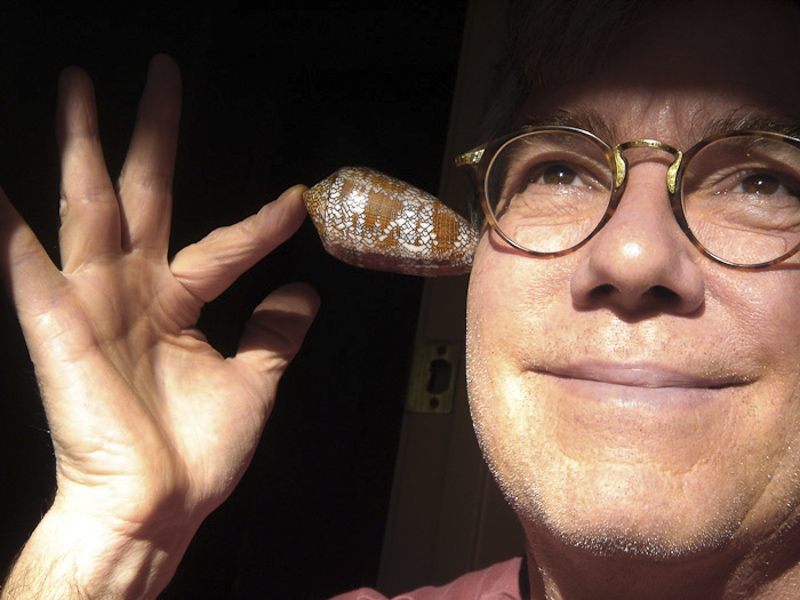
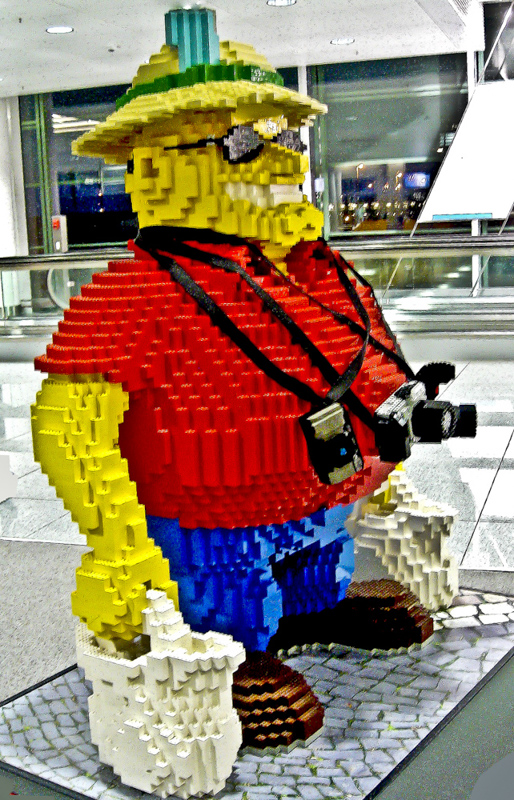
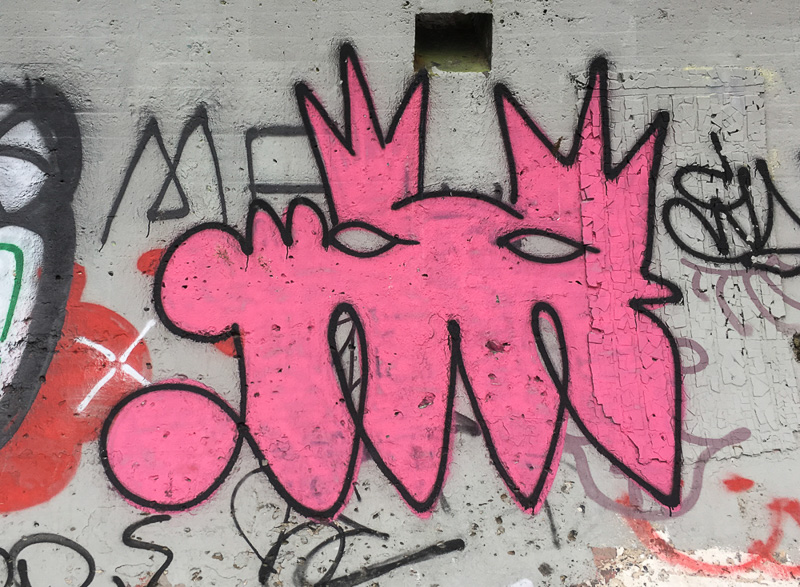
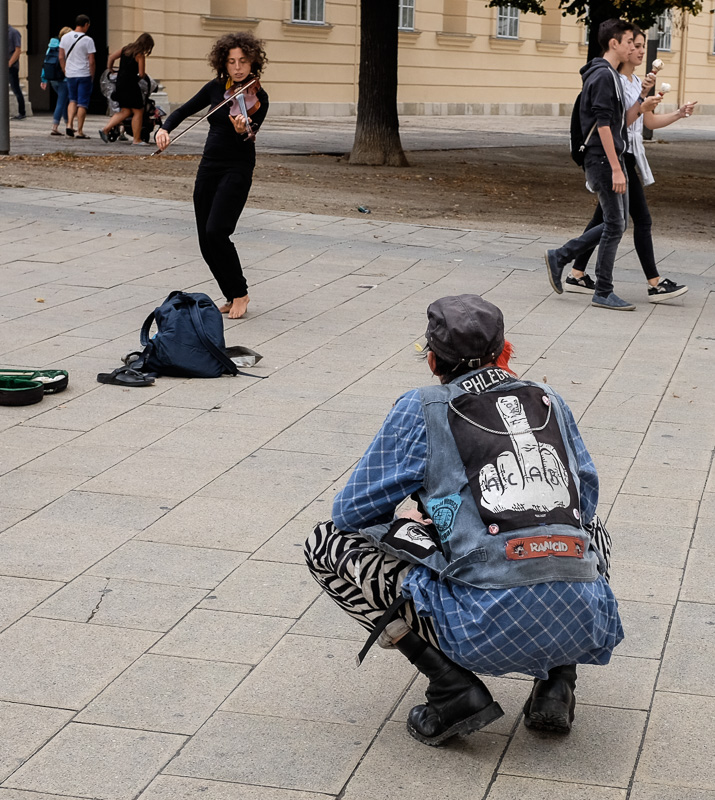
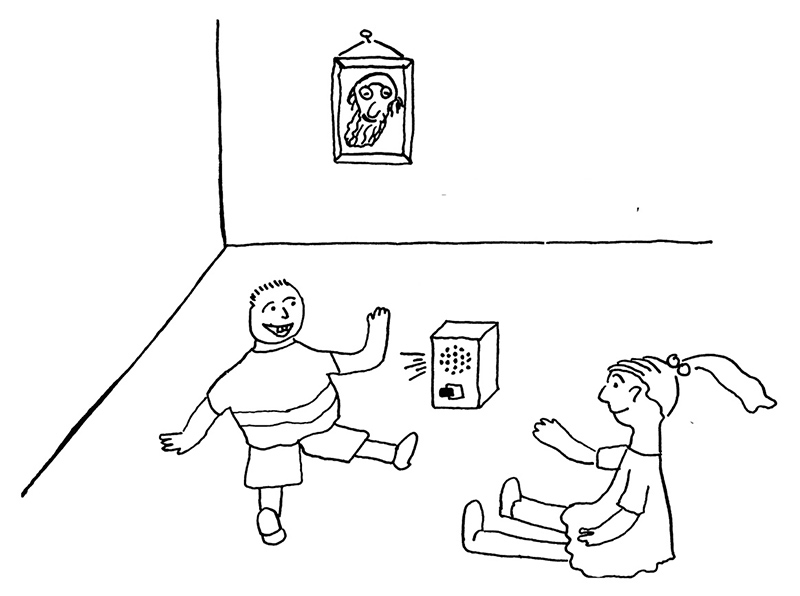
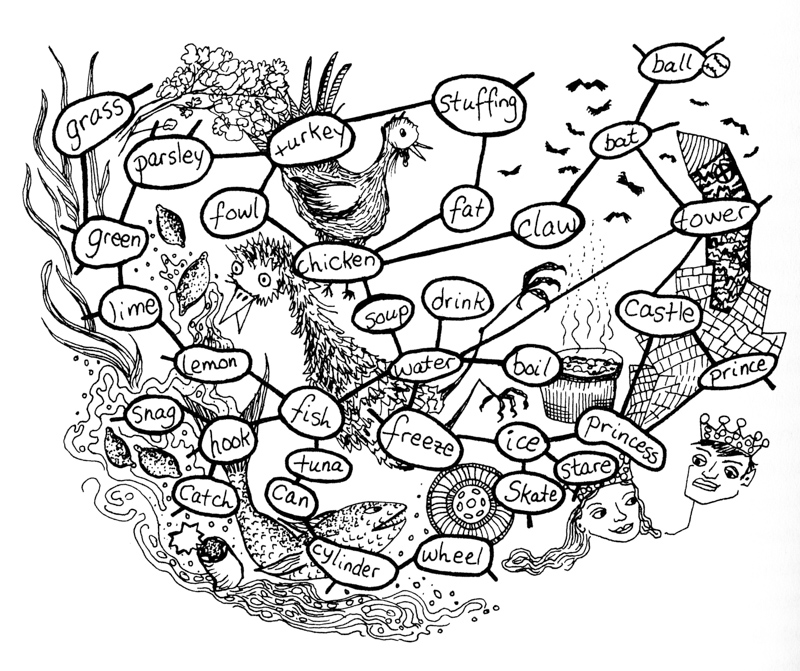

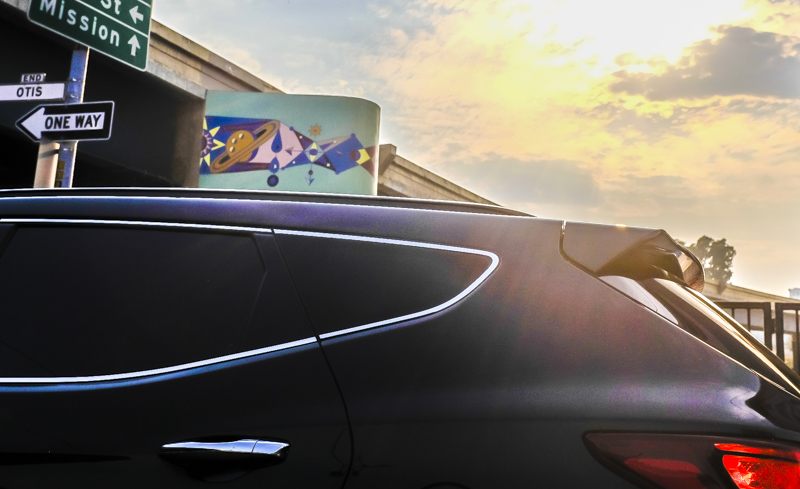
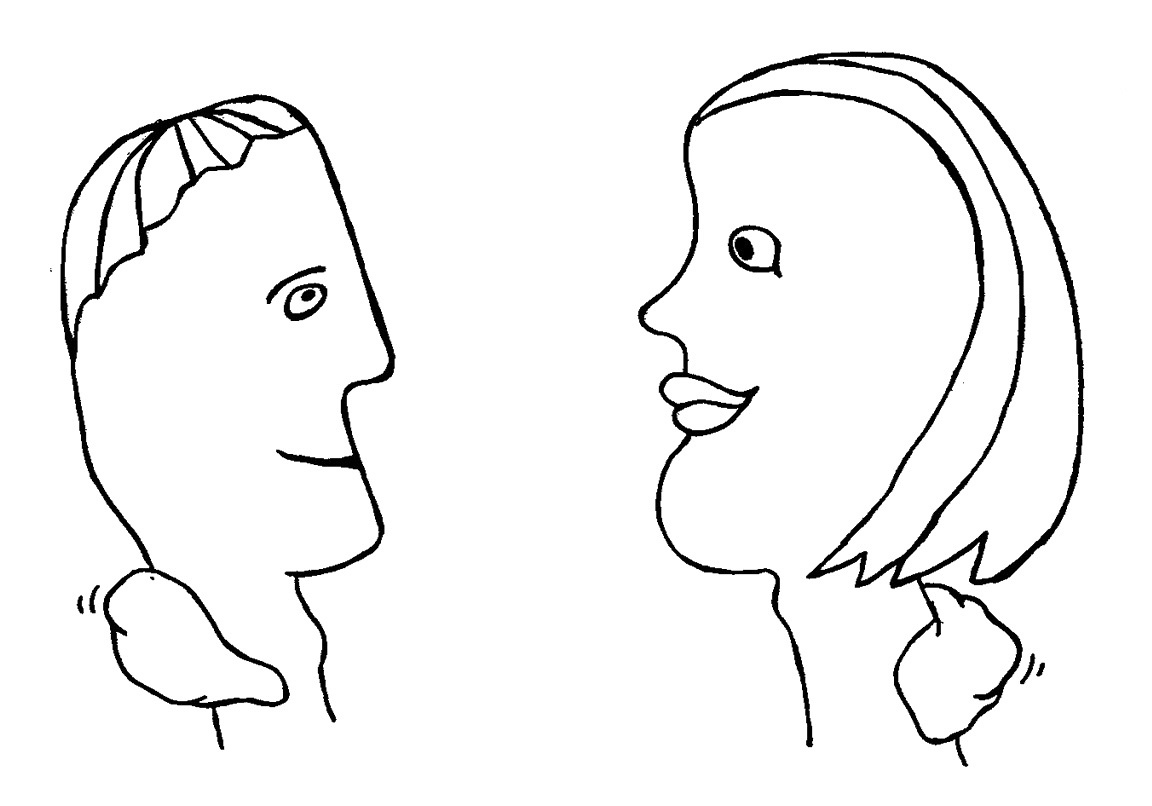
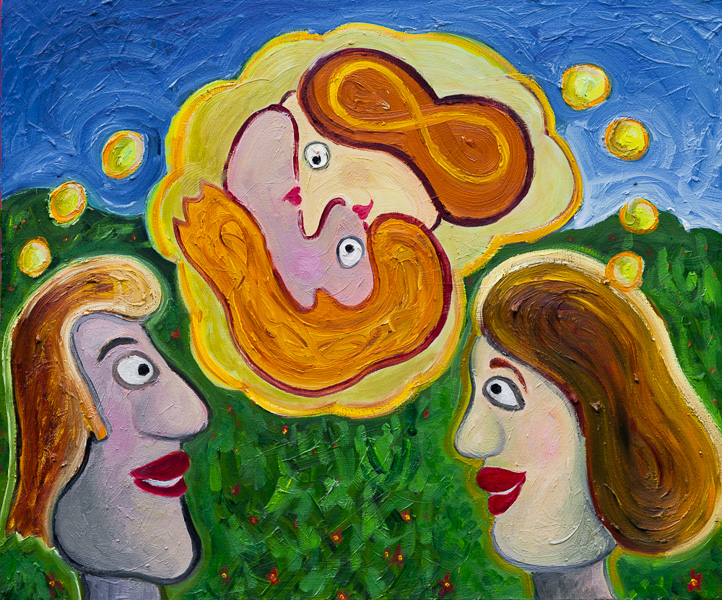
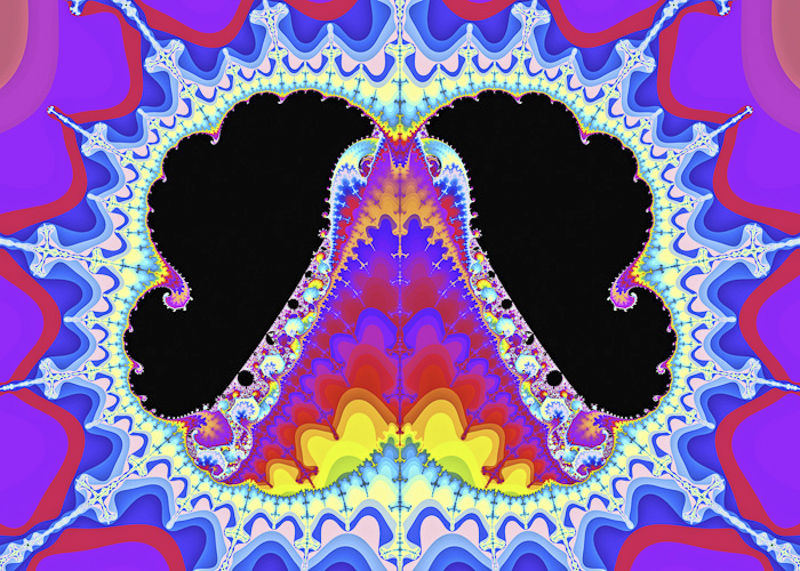
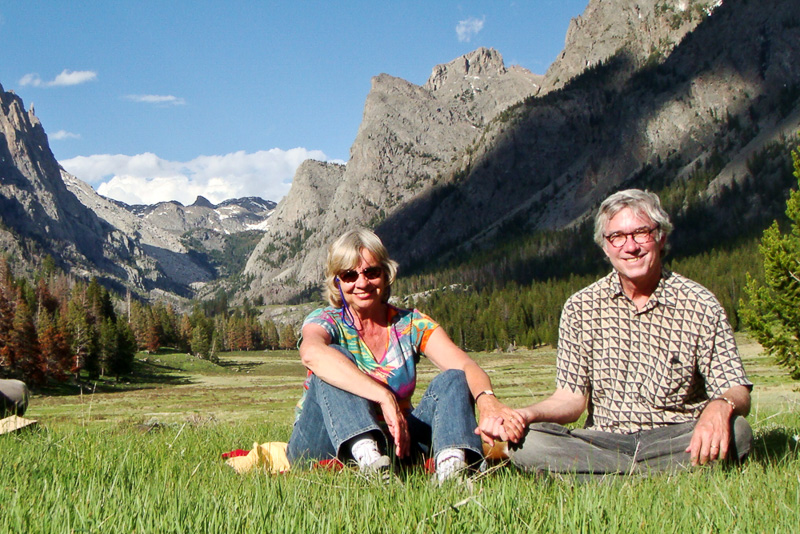
.jpg)


